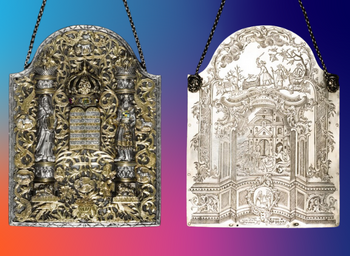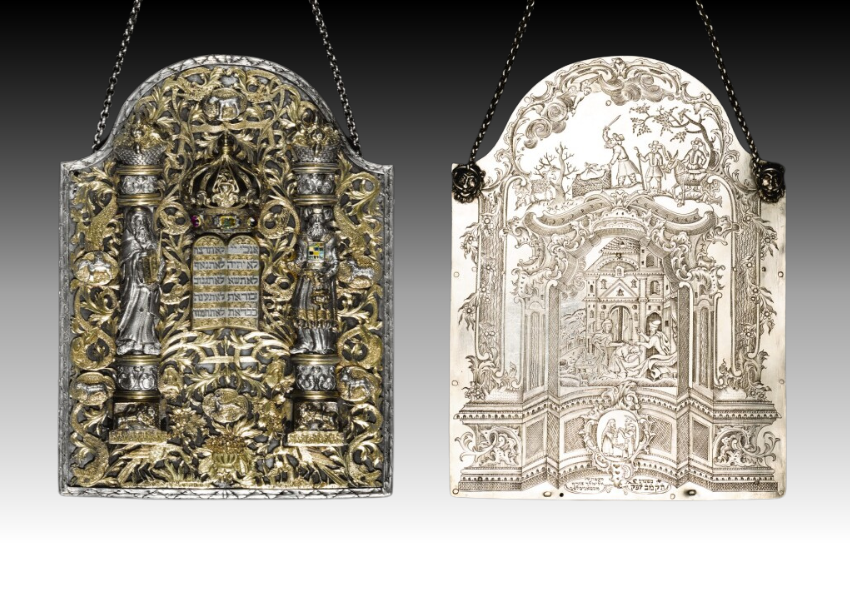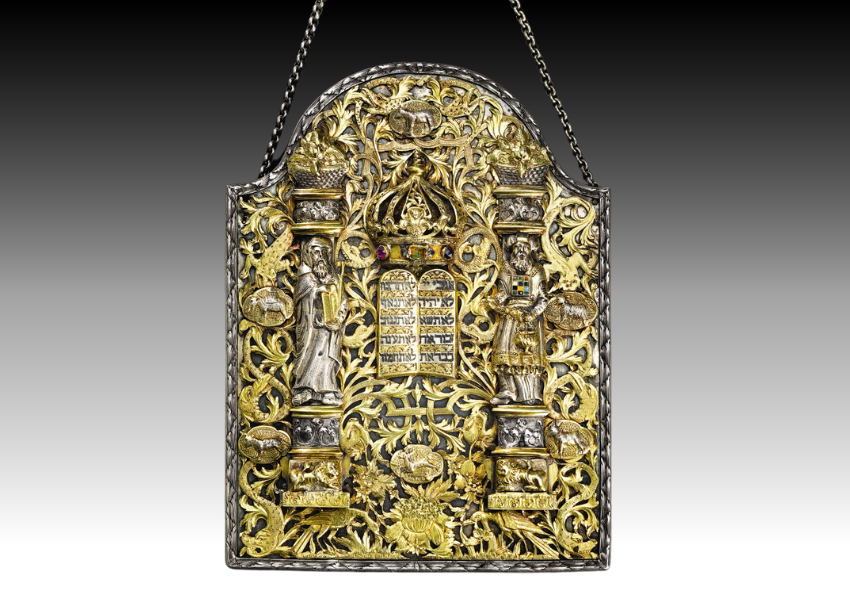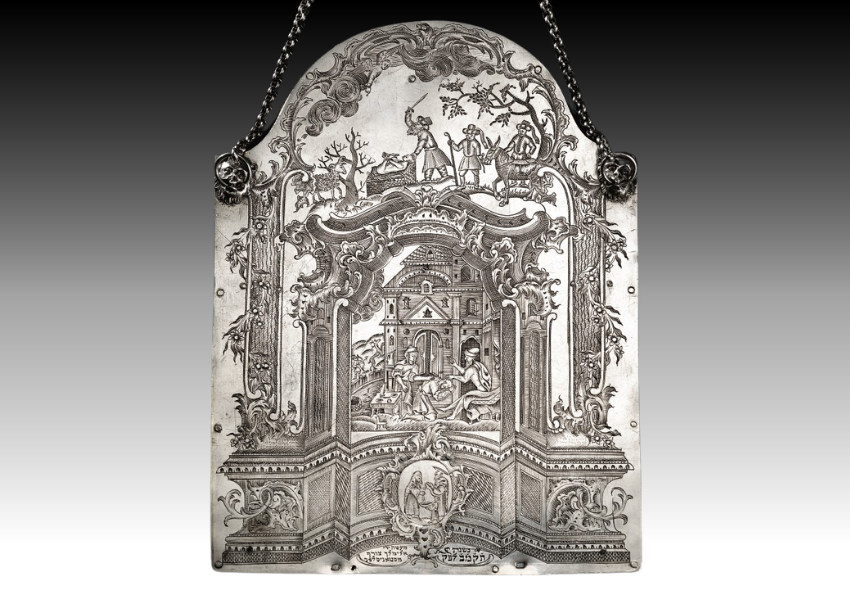A Shimmering Reason to Break the Rules
Published Jul 25, 2022

A Trip Worth Taking (Part 1/3)

Above: Elimelekh Tzoref, Torah Shield, 1781-82, silver. Photo courtesy of Museum of Fine Arts, Boston.
On a cold and snowy day in December 2020, Curator Simona Di Nepi broke her strict 9-months-COVID-19 isolation and entered a taxi bound for Sotheby’s New York. For good reason! The Judaica collection at the Museum of Fine Arts in Boston was to acquire one of the finest Torah shields in existence, an object that broke records at auction and created a sensation in the press.
A Closer Look (Part 2/3)

The Judaica market is not without its challenges. Most objects have little to no historical information: unidentified makers, unknown origin, and most problematic of all, no provenance. Provenance, that is, the history of the whereabouts and ownership of an artwork, is arguably the primary obstacle to building a Judaica collection. That is the reason why, when an object’s provenance is not only secure, but also prestigious, its value dramatically rises.
This is undeniably the case for any artwork once owned by the celebrated Sassoon family. Their fame as philanthropists, art collectors and owners of an international business empire, is virtually unparalleled. It should come therefore as no surprise that, when a precious 8-inch silver-gilt Torah shield in the Sassoon’s collection surfaced on the market last year, the news made international headlines. On 17th December 2020, in a suspense-filled sale at Sotheby’s New York, the Museum of Fine Arts in Boston secured the auction’s most coveted lot for its collection.
The modestly sized Torah shield is exceptional for many reasons. Its manufacture and decoration are superb, the latter boasting a densely ornamented surface on both sides. On the front, Moses, Aaron, and the Tablets of the Law between them, are encased within a shimmering net of intricately pierced gilt silver. On the back, engraved scenes from Isaac’s life stun for their minute observation of detail. Depictions of the Sacrifice of Isaac and Isaac blessing Jacob are bordered by an exuberant Rococo frame. Considering that Torah breastplates are not normally decorated on the back, the presence of narrative scenes is surprising, and its level of execution astounding. Clearly pleased with the outcome, rather than marking the shield with the maker’s silver marks, the artist engraved his name in Hebrew letters: “This is the work of my hands, Elimelekh Tzoref of Stanislav, in the year 5542” (1781/1782). The clearly legible inscription thus also provides the artist’s town of origin in Galicia, modern-day Ukraine. The signature also allowed scholars to attribute to Elimelekh Zoref two other similar, unsigned Torah shields, from the Sassoon collection- the first in the Israel Museum, Jerusalem, and the second now with a private collector.
In Good Hands (Part 3/3)

This jewel-like piece was once owned by Reuben David Sassoon (Bombay 1834 – London 1905) the foremost Judaica collector in the Sassoon dynasty. The object is indeed featured as a Sassoon loan in the catalogues of two London exhibitions: the 1887 Anglo-Jewish Historical Exhibition at Royal Albert Hall, and the Exhibition of Jewish Art and Antiquities at Whitechapel Art Gallery in 1906.
The shield may have previously belonged to celebrated early Judaica collector Philip Salomons (London, 1796 -1867), whose collection was in large part acquired by Reuben Sassoon. The absence of the engraved inscription “Philip Salomons Esq.”, habitually added to items he acquired, may be explained by the fact that the breastplate’s densely decorated surface simply left no room for additions. The object, however, was made in 1782, long before Salomons’ and Sassoon’s collecting days, and in an altogether different part of Europe. One must therefore wonder: for whom was this splendid piece originally made? An object made with such precious materials and this level of craftsmanship was most probably commissioned by a very wealthy and prominent member of the community. As for his identity, it has been perceptively suggested in the Sotheby’s catalogue that the iconography on the back of the shield, showing scenes from Isaac’s life and a lower medallion with a Levite washing the hands of a Cohen, may well indicate that he was a Levite called Isaac.
Although further research is required, it is arguable that such exceptional provenance, beauty and quality make the Sassoon Torah shield the most important MFA’s Judaica acquisition to date. Curators at the Boston museum are currently searching for a display location worthy of this important piece.
Simona Di Nepi is the Charles and Lynn Schusterman Curator of Judaica at the Museum of Fine Arts in Boston.
Reflections
Putting Judaica to Use
Do contemporary Jews in America still value Jewish ritual items? What has changed in our relationship with ceremonial objects, and why?
Judaica in the Museum
Does your relationship to objects change when you see them in a museum, opposed to in ceremonial use?
Want more?
Get curated JewishArts.org content in your inbox


